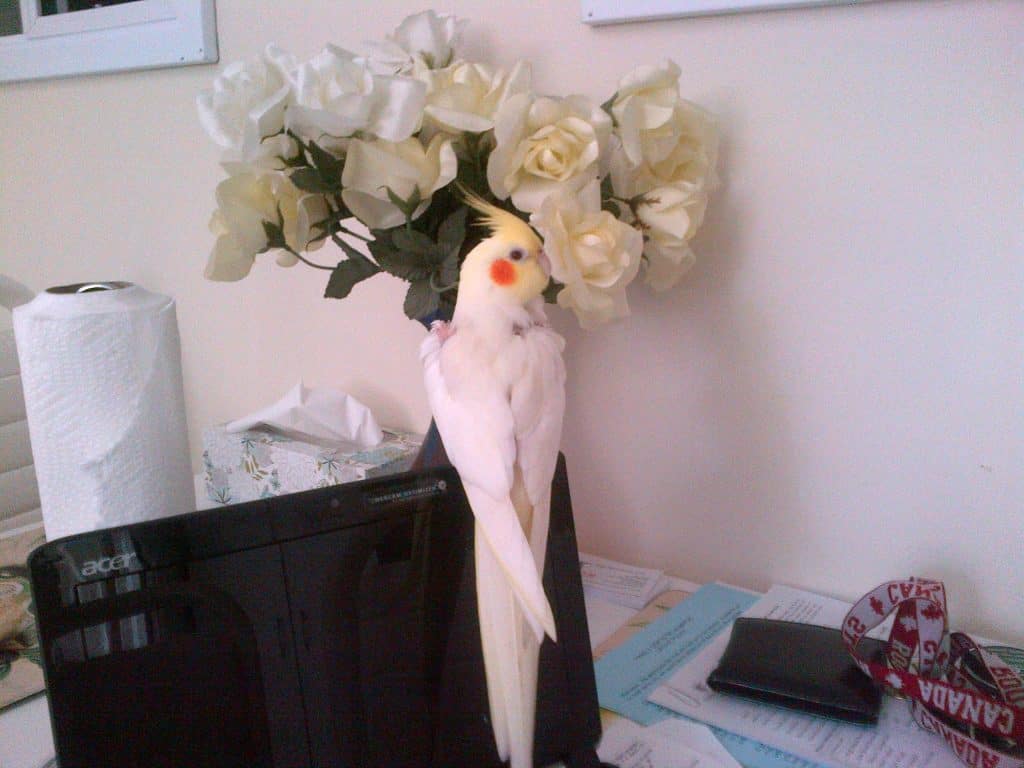In this article, we will answer the question are paint fumes bad for cockatiels and how to ensure their safety during a painting job. Cockatiels are popular pets known for their vibrant feathers and friendly personalities. Like all birds, cockatiels have delicate respiratory systems and are extremely sensitive to airborne pollutants and chemicals. In the context of painting a house or a specific room, it is essential to consider the potential harm that paint fumes can cause to your feathered friend.
Are Paint Fumes Bad for Cockatiels?

The short answer is yes, paint fumes can be harmful to cockatiels. Paints contain volatile organic compounds (VOC), which are chemicals released into the air as the paint dries. These harmful chemicals can easily be inhaled by your cockatiel, leading to respiratory problems and other health issues. Cockatiels have sensitive respiratory systems, and their small size exacerbates the risk of harm from paint fumes. Therefore, it’s crucial to take precautions to protect your pet during a painting project.
How to Ensure Your Cockatiel’s Safety?
1. Ventilate the Room: When painting a room, make sure to open windows and use fans to circulate fresh air. Directing the stove exhaust fan or placing exhaust fans in multiple places can help expel the fumes effectively. Running a ceiling fan or an air purifier with a high-efficiency particulate air (HEPA) filter can also aid in removing harmful fumes from the air.
2. Choose Low VOC Paints: Opt for paints labeled as “low VOC” or “no VOC” when possible. These paints have fewer harmful chemicals, reducing the risks associated with paint fumes. Water-based paints, latex paints, and low VOC paints are generally safer than oil-based paints, as they emit fewer toxic fumes.
3. Keep Your Cockatiel Away from the Freshly Painted Room: During the painting process, it is essential to keep your cockatiel away from the freshly painted room. Birds should never be in or near a painted area until it is completely dry and the smell is gone. Consider relocating your feathered friend to another part of the house, preferably the main living area, until the wet paint has dried and the fumes have dissipated.

4. Improve the Air Quality: If your home has a central heating, ventilation, and air conditioning (HVAC) system, make sure to install pleated filters to capture airborne particles and harmful fumes. Regularly checking and replacing heat and air conditioning filters is crucial for maintaining a healthy environment for your cockatiel. Additionally, opening windows on opposite sides of the house can provide consistent ventilation, allowing fresh air to replace the fumes.
5. Plan Your Painting Project Wisely: Prioritize your bird’s health by planning your painting project during a time when your cockatiel can stay in a safe and well-ventilated area for an extended period. Avoid painting near your bird’s cage or in a room adjacent to it. Consider doing the painting when the weather permits keeping the windows open for longer periods, aiding the dissipation of fumes.
- STURDY FRAME - This large birdcage is made of high-quality, low-carbon, rust-proof and waterproof steel, with guaranteed quality and durability.
- CONSIDERATE DESIGN - This cage is covered with non-toxic hammer-pattern paint, giving birds a healthier and safer living environment.
- EASY CLEANING - To clean the bottom of this birdcage, all you need to do is to slide out the bottom tray and wash it off; Additionally, all shelving can be easily removed for easy cleaning.
- SAFETY & SECURITY - The cage is made of low-carbon steel, which is rust-proof and water-resistant, and the latches are strong and durable.
- ABUNDANT ACCESSORIES - In addition to high-quality steel cages, there are also 2 white plastic food boxes, 2 long wooden perches.
Final Thoughts
While a freshly painted room can enhance the aesthetics of your living space, it is crucial to prioritize your cockatiel’s well-being during a painting job. Paint fumes can be dangerous to birds, especially those with sensitive respiratory systems like cockatiels. By implementing proper ventilation, choosing low-VOC paints, and keeping your bird away from the newly painted area, you can ensure their safety and minimize the risk of harm from paint fumes.
Remember, it is always better to be safe than sorry when it comes to your cockatiel’s health. Take necessary precautions, such as providing fresh air, consistent ventilation, and monitoring the painting process closely to guarantee a safe environment for your beloved feathered companion.
Key take aways on Are Paint Fumes Bad for Cockatiels
- 🚨 Highly toxic: paint VOCs irritate sensitive avian lungs → rapid respiratory distress or death.
- 🏠 Relocate first: move bird far from painting zone until odor-free + 48 h extra.
- 🎨 Choose safer: low-/zero-VOC water-based paints; skip oil-based & spray cans.
- 💨 Ventilate hard: open windows, HEPA purifier, exhaust fans; run for days post-job.
- 🔍 Vet alert: watch for tail-bobbing, wheezing, lethargy; seek immediate avian vet if signs appear.




